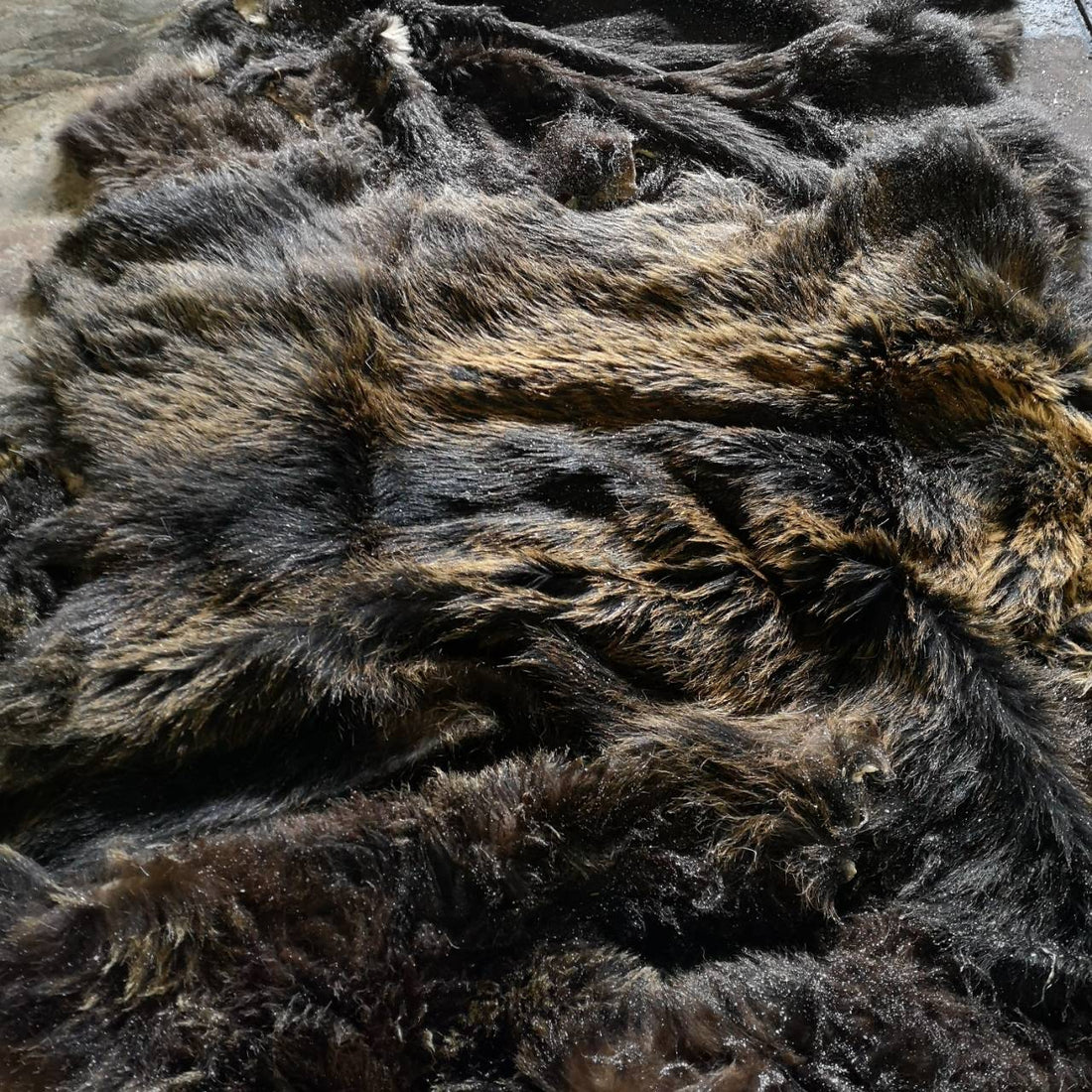
Vol.1 How Gibier Leather is Made
Share
Nice to meet you all.
I'm NORI, SEVESKIG DESIGNER.
As we are a brand with deep ties to leather, in the first blog I would like to write about the process of turning the "skin" of a culled bear into "leather", as well as some simple recipes for the leather we have produced this time.
First, the raw hides (with fur) arrive at the tanner.
The hair is then removed, and the leather goes through processes such as salting, tanning, dyeing, and finishing to become leather.
Tweezing, tanning, and dyeing are all done using a fairly large drum machine (a machine similar to a drum washing machine used by tanners).
Of course, we will be working on all different drums.
It's rare to see raw hide before it has been plucked, so I've included a photo.

The bear leather used in this case is from a brown bear native to Hokkaido, but once it is made into leather, it will end up being about the same size as a deer.

The leather is tanned using natural vegetable tannins and finished with a vintage wax.
In any case, bears have a unique, strong texture that is not found in any other animal, and their skin shines like a jewel amidst their roughness.
Compared to wild boars and deer, the numbers caught are overwhelmingly smaller, making them truly rare and highly valued individuals.
We plan to accept "SPECIAL ORDERS" in limited quantities in the future, so we will announce the news again at that time.
This time we are planning to test produce something that is quite difficult to make, so please look forward to it.
See you later!
NORI

34 comments
buy generic combigan brimonidine generic
priligy dapoxetine dapoxetine for sale
is chloroquine over the counter https://chloroquineorigin.com/ choloriquine
canadian pills online https://canadapillstorex.com/ average perscription pills taken by 65 year old canadian?
is viagra the same in canada https://canadaviagrastore.com/ organic viagra in canada